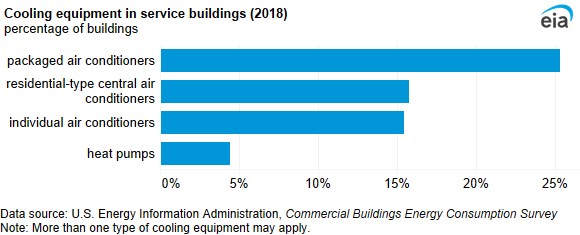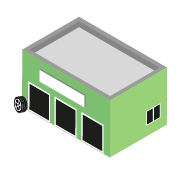 2018 CBECS: Principal Building Activities
2018 CBECS: Principal Building Activities
Service
Service buildings are buildings in which a type of service, other than food service or retail sales of goods, is provided.

We publish four subcategories of service buildings:
- Post office or postal center
- Vehicle service or repair
- Vehicle storage or maintenance
- Other service, which includes salons, spas, barbershops, building or grounds maintenance, car washes, copy centers, print shops, dry cleaners, laundromats, and kennels
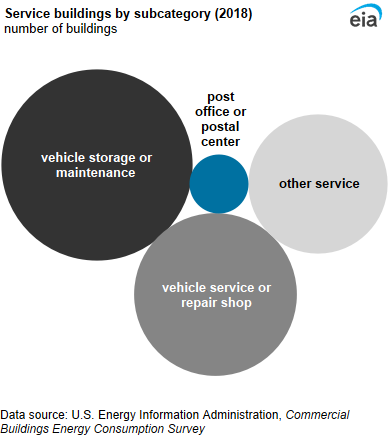
The most common type of service building was vehicle storage or maintenance buildings (43%), followed by vehicle service or repair shops (31%).
More than one-half (60%) of service buildings were less than 5,000 square feet. Only 1% of service buildings were larger than 50,000 square feet. On average, service buildings were 7,200 square feet per building.
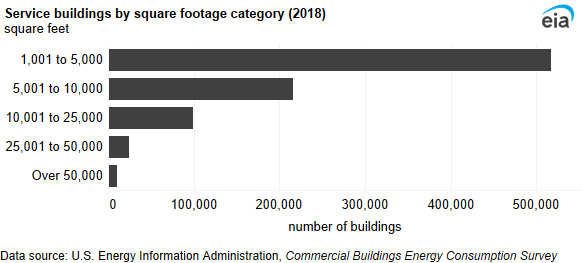
Energy use in service buildings
Service buildings used 318 trillion British thermal units (TBtu) of energy in 2018. Service buildings accounted for 6% of total commercial floorspace and 5% of energy consumption in commercial buildings. Similar amounts of electricity (153 TBtu) and natural gas (145 TBtu) were used. The mean energy intensity for service buildings was 50.9 thousand British thermal units (MBtu) per square foot.
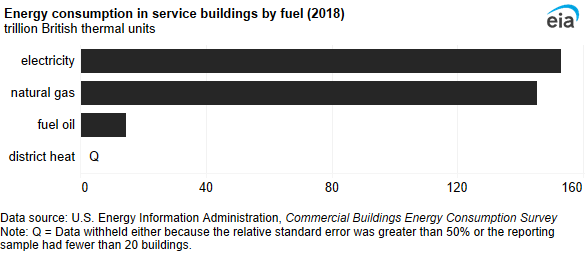
More than half of energy consumption in service buildings came from vehicle storage or maintenance buildings (33%) and vehicle service or repair buildings (27%).
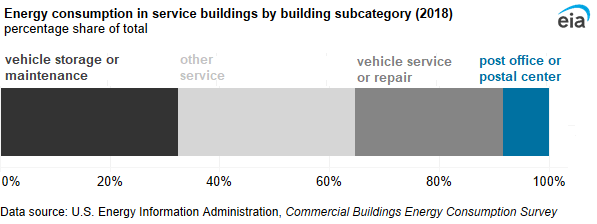
Space heating accounted for more than one-half of end-use consumption in service buildings (52%). All other end uses each accounted for 15% or less of end-use consumption.
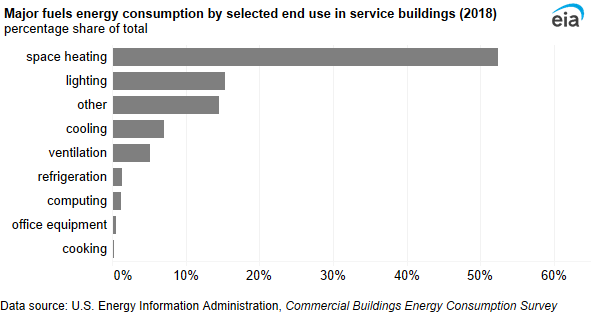
Energy intensity was highest for space heating (33.7 MBtu per square foot) and lowest for office equipment (0.4 MBtu per square foot).
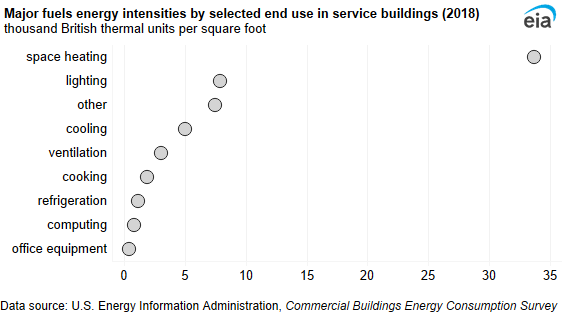
Inside service buildings
Individual space heaters were the most common heating equipment and were used in 39% of service buildings. Furnaces were the second-most-used heating equipment (31%).
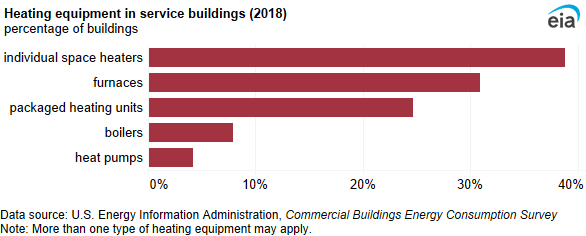
Packaged air conditioners were the most common cooling equipment (25%) in service buildings. Residential-type central air conditioners (16%) and individual air conditioners (15%) were the second- and third-most-used cooling equipment in service buildings.
